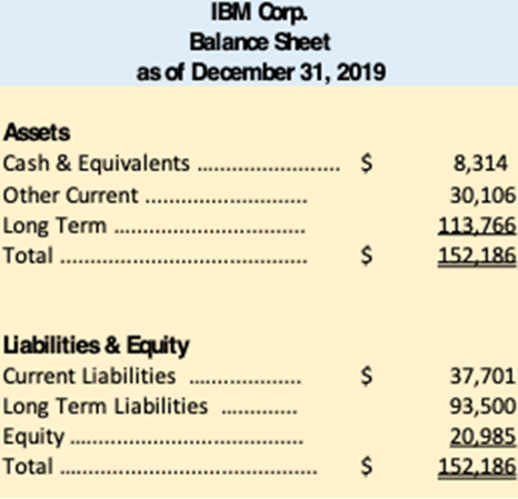
The COVID-19 pandemic has been a global shock to businesses everywhere. Uncertainty about its path, duration and magnitude has wreaked havoc on many of our commercial clients. The associated government-mandated shutdown orders have drastically impacted businesses’ ability to make timely rental payments.
The Bankruptcy Code does not generally allow debtors to unilaterally abate or modify the terms of their property leases. However, Congress may enact legislation amending the Bankruptcy Code in order to provide bankruptcy courts additional tools to offer rent relief to debtor-tenants. Congress enacted the Consolidated Appropriations Act, 2021 (“CAA”), an approximately $2.3 trillion omnibus appropriations bill, which was signed into law on December 27, 2020. The CAA not only funds the federal government, but also provides additional COVID-19 relief for businesses and individuals. Significantly, the CAA includes nine amendments to the Bankruptcy Code, three of which directly impact commercial debtor-tenants.
This article aims to educate business law practitioners on how their commercial clients can get much needed rent relief based on case law and/or these newly enacted amendments. First, we explore how courts have provided rent relief to commercial debtors based on:
- a force majeure clause in a tenant’s lease,
- temporary suspension of a bankruptcy case, or
- equitable rent relief.
Next, we review how the CAA amends Bankruptcy Code sections 365(d)(3), 365(d)(4), and 547 to extend the deadlines to perform rental obligations, assume or reject a lease, and preclude preference claims with respect to certain payments of rental arrearages. The amendments to section 365(d)(3), allowing courts to extend the time for performance under a commercial lease, are limited to subchapter V small business debtors. The other two amendments apply to all debtors. All three amendments have a two-year sunset.
A. Courts Considering Rent Relief Based on Lease Terms and Bankruptcy Code
The Bankruptcy Code generally requires a debtor in bankruptcy to pay its rental obligations during the bankruptcy case. Notwithstanding this requirement, at least one court has relied upon a force majeure clause in a lease to offer rent abatement during bankruptcy. The Bankruptcy Court for the Northern District of Illinois in Hitz Restaurant Group found that the Illinois governor’s executive order limiting restaurant capacity triggered the lease’s force majeure clause.[1] The landlord had sought to enforce the obligation of the debtor to pay post-petition rent under section 365(d)(3) of the Bankruptcy Code. The debtor argued its obligation to pay post-petition rent was excused by the lease’s force majeure clause. The court agreed with the debtor in part, allowing a 75% rent abatement in proportion to the percentage of floor space restricted by the ban on dining at the restaurant. It is worth noting that while the specific lease at issue contained language offering potential for relief, other leases may not. The lease in Hitz Restaurant Group included “governmental action” and “orders of government” provisions in the force majeure clause. Moreover, other leases may explicitly exclude rent obligations from the scope of obligations excused by force majeure events. What do your clients’ leases say? Can you amend the lease to include favorable language?
Other courts have looked to the Bankruptcy Code to grant rent relief for debtor-tenants. Section 365(d)(3) of the bankruptcy code requires timely payment of post-petition rent, but allows courts to extend the time for performance, for cause, up to 60 days following the petition date.[2] Yet some bankruptcy courts have used Bankruptcy Code sections 105 and 305 to defer payment of post-petition rent beyond the first 60 days of the case.[3] In Modell’s Sporting Goods, the Bankruptcy Court for the District of New Jersey granted the debtors’ request to temporarily suspend the bankruptcy case, and defer rent payment, pursuant to sections 105(a) and 305(a).[4] The bankruptcy case commenced on March 11, 2020, and two days later, the COVID-19 pandemic was declared a national emergency.[5] The debtors subsequently requested an “Operational Suspension” of the bankruptcy case, including rent deferment, due to COVID-19-related disruptions to the planned liquidation sales of the debtors’ stores. The court found that it was in the best interest of the debtors and creditors to grant the requested relief. The court extended the suspension twice—it ultimately lasted until June 15, 2020—due to the continued impact of stay-at-home orders on the ability to conduct going-out-of-business sales. To what extent do the current COVID-19-related governmental orders impact the progression of your clients’ Chapter 11 cases?
Similarly, in Pier 1 Imports, the Bankruptcy Court for the Eastern District of Virginia granted the debtors’ request for a “breathing spell” to allow some debtor-tenants to defer rental payments pursuant to the court’s equitable power under section 105(a).[6] The court “recognize[d] the extraordinary nature of the relief,” but found that the court’s “broad equitable powers” allowed such relief, notwithstanding section 365(d)(3) requiring timely performance of rental obligations and the limits on bankruptcy courts’ equitable powers.[7] The court explained that “[d]eferring rental payments during an unprecedented financial crisis in order to provide a post-Petition Date ‘breathing spell’ for the Debtors is not inconsistent with similar relief the bankruptcy process otherwise provides for pre-Petition Date obligations.”
Notably, the Bankruptcy Court for the Southern District of Texas rejected similar arguments for rent relief. In CEC Entertainment, the court denied the debtors’ motion to abate or reduce their rent obligations, notwithstanding the impact of COVID-19 in curtailing the debtors’ ability to operate key aspects of its business (operating a nationwide chain of Chuck E. Cheese venues).[8] The court found nothing in the Bankruptcy Code nor in state law or the lease’s force majeure clauses permitting rent abatement. The CEC Entertainment court disagreed with Pier 1 Imports, explaining that it could not override section 365(d)(3)’s unambiguous requirement of timely performance of obligations under commercial leases. The court cited to Law v. Siegel, a United States Supreme Court opinion explaining that a bankruptcy court’s equitable powers under section 105(a) are limited by the express provisions of the bankruptcy code, and section 365(d)(3) “expressly prohibits delays beyond 60 days after the order for relief.”
B. The CAA Amends the Bankruptcy Code to Offer Rent Relief to Commercial Debtors
Some courts have found creative avenues in the Bankruptcy Code or force majeure clauses to offer rent relief to commercial debtor-tenants struggling as a result of the COVID-19 pandemic. Sometimes, however, creative lawyering will not work, as reflected by the recent CEC Entertainment decision finding that section 365(d)(3) limits bankruptcy courts’ flexibility in crafting rent relief beyond the first 60 days of a case. The recent enactment of the CAA, however, has expanded bankruptcy courts’ discretion to grant relief regarding commercial leases.
First, the CAA amends section 365(d)(3) to allow courts to extend the time for performance of lease obligations beyond the normal extension period, but only in a subchapter V case. Generally, a debtor operating in bankruptcy must timely perform all obligations under an unexpired lease of nonresidential real property.[9] Section 365(d)(3) allows a court to extend, for cause, the time for performance—but not beyond 60 days after the petition date. The CAA, however, extends the potential relief period by an additional 60 days—for a potential total of 120 days— only for certain small business debtors filing under subchapter V of Chapter 11.[10] Where a subchapter V debtor is experiencing or has experienced a material financial hardship due, directly or indirectly, to the COVID-19 pandemic, a court may extend the time for performance of commercial lease obligations for 60 days after the petition date. “What’s new” here is that the CAA allows courts to extend the relief period by an additional 60 days for subchapter V debtors if such a debtor continues to experience material financial hardship due, directly or indirectly, to the COVID-19 pandemic. Further, if an extension is granted for an obligation, the obligation is treated as an administrative expense that has priority for payment in bankruptcy.
Second, the CAA amends section 365(d)(4) to extend the initial deadline for any debtor-tenant—not just those filing under subchapter V—to assume or reject an unexpired lease of nonresidential real property by an additional 90 days to a total of 210 days after the petition date.[11] Section 365(d)(4)(B)(i) already allows the court to extend the deadline to assume or reject a lease, for cause, by an additional 90 days. Therefore, a debtor could potentially have as many as 300 days to decide whether to assume or reject an unexpired commercial lease without the consent of the landlord. Yet, the court may grant further extension upon written consent of the landlord. The CAA includes a two-year sunset after enactment, upon which the above amendments will be struck from the Bankruptcy Code on December 27, 2022. However, the amendments apply to all debtors who file under subchapter V of Chapter 11 prior to the sunset.
Additionally, the CAA aims to incentivize a distressed company’s landlords and vendors to offer flexible payment terms by amending the preference provisions of section 547 to provide that any “covered payment of rental arrearages” cannot be avoided as preferences.[12] “Covered payments” are defined as payments made pursuant to arrangements entered into between any debtor-tenant and their landlord on or after March 13, 2020 to defer or postpone payments owed under a lease; such arrangement may also include the debtor’s obligation to pay penalties or fees. This amendment also includes a two-year sunset, after which it will be struck on December 27, 2022. However, the amendment to section 547 applies in any bankruptcy case commenced prior to the sunset.
Commercial tenants that take advantage of the relief offered under the Bankruptcy Code should be aware that if they decide to assume a lease, they must cure all back rent. Section 365(b) generally requires that a debtor-tenant cure, or provide adequate assurance of prompt cure, of any default under the lease.
C. Conclusion
Recent decisions inform us how courts have been grappling with the Bankruptcy Code’s inflexibility with respect to leases of non-residential real property. The Consolidated Appropriations Act, 2021 offers a measure of relief to debtors experiencing COVID-19-related financial woes by enacting amendments to Bankruptcy Code provisions relating to the treatment of lease . Significantly, the CAA will likely give pause to bankruptcy courts who would otherwise emulate the Modell’s Sporting Goods and Pier 1 Imports courts’ use of sections 105(a) and 305(a) to defer commercial rent obligations beyond the first sixty days of bankruptcy—in contravention of 365(d)(3). By providing for specific and limited rent-deferment relief to commercial debtor-tenants affected by the COVID-19 pandemic, and by limiting the extended relief to subchapter V small business debtors, the CAA expresses Congress’s intent that 365(d)(3)’s requirements for timely fulfillment of rent obligations should otherwise be strictly complied with.
[1] In re Hitz Rest. Grp., 616 B.R. 374 (Bankr. N.D. Ill. 2020).
[2] 11 U.S.C. § 365(d)(3).
[3] 11 U.S.C. § 105(a) (allowing the court to “issue any order, process, or judgment that is necessary or appropriate to carry out the provisions of this title”), § 305(a)(1) (allowing a court to “suspend all proceedings in a case” if “the interests of creditors and the debtor would be better served by such…suspension”).
[4] In re: Modell’s Sporting Goods, Inc., et al., No. 20-14179-VFP (Bankr. D.N.J. 2020).
[5] Proclamation on Declaring a National Emergency Concerning the Novel Coronavirus Disease (COVID-19) Outbreak, March 13, 2020, https://www.whitehouse.gov/presidential-actions/proclamation-declaring-national-emergency-concerning-novel-coronavirus-disease-covid-19-outbreak/ (last accessed December 28, 2020).
[6] In re: Pier 1 Imports, Inc., et al., 615 B.R. 196 (Bankr. E.D. Va. 2020).
[7] See Law v. Siegel, 571 U.S. 415, 421 (2014) (section 105(a) “does not allow the bankruptcy court to override explicit mandates of other sections of the Bankruptcy Code”).
[8] In re: CEC Entertainment, Inc., et al., No. 20-33162, 2020 WL 7356380 (Bankr. S.D. Tex. Dec. 14, 2020).
[9] 11 U.S.C. § 365(d)(3).
[10] Under the Small Business Reorganization Act (SBRA) of 2019, Pub. L. No. 11654, 133 Stat. 1079, small business debtors may elect to file under subchapter V of Chapter 11 of the bankruptcy code if their debt does not exceed $2,725,625. The debt limit was increased to $7,500,000 by the Coronavirus Aid, Relief, and Economic Security (CARES) Act of 2020, Pub. L. No. 116-136, 134 Stat. 281 (effective March 27, 2020 for a period of one year).
[11] 11 U.S.C. §§ 365(d)(4)(A)(i), (B)(i).
[12] The CAA also precludes avoidance of covered payments of “supplier arrearages.”












